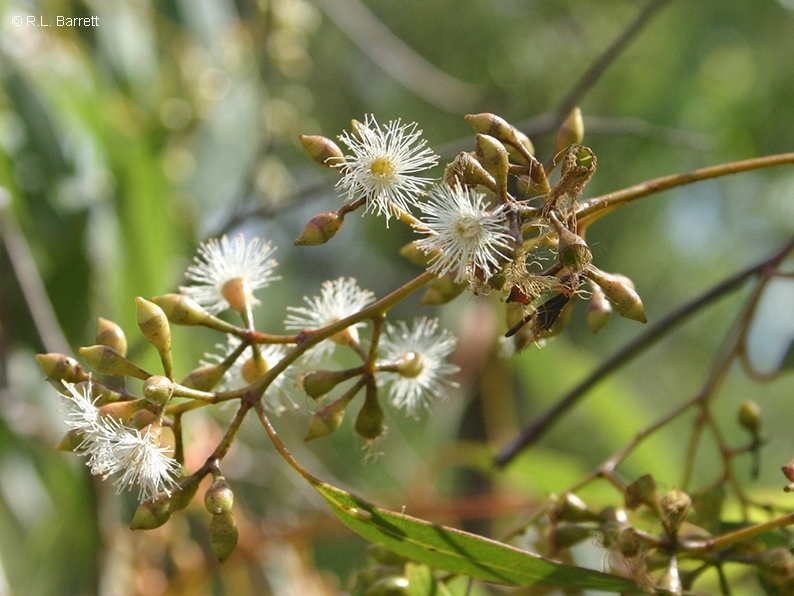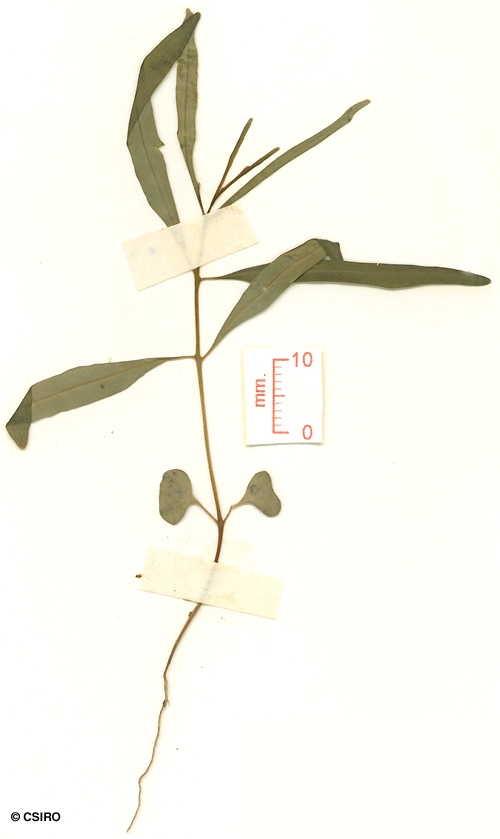Australian Tropical Rainforest Plants - Online edition
Eucalyptus crebra F.Muell.




Mueller, F.J.H. von (1859) Journal Linnean Society, Botany 3: 87. Type: Queensland, Burdekin, 10 Nov. 1856,F. Mueller; holo: MEL. Fide S. T. Blake (1953) Aust. J. Bot. 1: 304.
Red Ironbark; White Ironbark; Narrow Leaved Ironbark; Narrow Leaved Red Ironbark; Ironbark, White; Ironbark, Red; Ironbark, Narrow Leaved; Ironbark, Grey; Grey Ironbark
Dead bark dark, almost black on the outer surface; layered when viewed in transverse section, the layers being full of gum veins.
Oil dots somewhat scattered. Intramarginal vein very close to the margin and almost indistinguishable from it. Leaf blades about 6-13 x 0.7-1.5 cm. Petioles yellowish. Crushed leaves emit a strong eucalyptus oil odour.
Individual flowers pedicellate. Operculum conical to hemispherical, about 2-3 mm diam., shorter than the calyx tube (hypanthium). Outer operculum shed early, well before the mature bud stage.
Cotyledons about 3-5 x 5-8 mm, oil dots visible along the margins, petioles about 3-5 mm long. First leaf blades about 20-27 x 4-5 mm, petioles about 3-4 mm long. At the tenth leaf stage: leaf blades about 40-80 x 6-8 mm. petiole about 206 mm long. Oil dots visible in all parts of the leaf blade with the aid of a lens. Seed germination time 5 to 10 days.
Endemic to Australia, when broadly defined occurs in CYP, NEQ, CEQ and southwards to central New South Wales. Altitudinal range in CYP and NEQ from near sea level to 900 m. Usually grows in open forest and dry sclerophyll forest but sometimes found in and on the margins of monsoon forest.
Produces a very durable, hard and heavy timber suitable for heavy construction wood.
Wood specific gravity 1.09. Cause et al. (1989).





